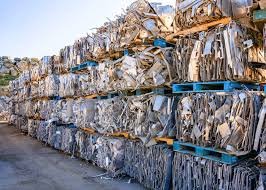In today’s fast-paced industrial world, companies often find themselves sitting on unused or outdated equipment, metals, and materials. When it’s time to clear out that space, two common options emerge: Industrial Asset Recovery and Scrap Selling. Though they might seem similar at first glance, these processes are very different in purpose, value, and results. Let’s break down what sets them apart and why understanding the distinction matters for your bottom line.
What Is Scrap Selling?
Scrap Selling is the process of disposing of unwanted industrial materials—like metals, wires, or machinery—that are no longer usable in their current form. These items are typically sold to scrap equipment buyers who melt down, recycle, or repurpose the raw materials.
Think of it like this: you’re selling the “leftovers” of your operations. It’s fast, easy, and can put some cash in your pocket. Companies that focus on industrial scrap metal often buy these materials in bulk and handle the recycling themselves.
What Is Industrial Asset Recovery?
Industrial Asset Recovery, on the other hand, goes one step further. It involves identifying valuable, reusable assets among your old equipment, refurbishing them if necessary, and reselling or repurposing them within your own operations or to other businesses.
It’s a more strategic approach—maximizing the value of your unused items instead of treating everything as junk. Businesses offering services like industrial recycling help companies recover more value by identifying what can be salvaged before it’s scrapped.
Key Differences Between Scrap Selling and Asset Recovery
Let’s explore the main areas where these two differ:
1. Value Potential
With Scrap Selling, you’re mostly earning based on material weight—like copper, aluminum, or steel. Prices fluctuate with the market. But in asset recovery, you’re tapping into the resale value of machinery, electrical parts, and usable equipment, which can often yield a much higher return.
2. Purpose and Process
Scrap selling is focused on disposal. You want it gone, and fast. But asset recovery is about optimization—finding the right channels to reuse or resell.
For example, if you’re replacing old transformers, you can either scrap transformer units or recover their parts for resale. The decision depends on condition and market demand.
3. Who Buys It?
In scrap selling, your buyers are recyclers or scrap yards. In asset recovery, your audience includes other companies, manufacturers, and scrap wire buyers who see value beyond just weight.
4. Environmental Impact
Both methods support recycling, but industrial asset recovery goes further by extending the life of equipment, reducing manufacturing demand, and minimizing waste. While scrap selling does promote recycling, it’s more of an end-of-life solution.
When Should You Choose Scrap Selling?
- You have damaged, corroded, or outdated items with no resale value.
- You want to quickly clean out space with minimal processing.
- The cost of storage outweighs the potential asset recovery value.
In these cases, working with trusted scrap buyers in the USA ensures a fair price for your industrial leftovers.
When Is Asset Recovery Better?
- The equipment is still functional or can be refurbished.
- You want to maximize return on large or specialized machinery.
- You’re decommissioning a plant and want to explore every avenue of reuse.
For instance, in large-scale projects like industrial dismantling, valuable equipment can often be salvaged before heading to the scrapyard. Partnering with experts in industrial scrap helps you evaluate what to keep and what to scrap.
Combining Both: The Smart Strategy
Many companies now use a hybrid approach: they first identify valuable assets for recovery and sell off the rest as scrap. It’s efficient, profitable, and eco-conscious. If you’re dealing with massive items like turbines, consider turbine recycling services to break them down for both reuse and scrap.
Similarly, during demolition disposal, separating valuable parts first can significantly boost the project’s ROI.
Final Thoughts: Don’t Just Scrap—Think Smart
The choice between Scrap Selling and Industrial Asset Recovery doesn’t have to be either-or. Think of it as a value ladder: assess what can be reused, then sell the rest as scrap. This way, you make the most money, save time, and reduce waste all at once.
Remember, not all “scrap” is worthless. With the right team and proper evaluation, even your old wires, panels, or transformers can bring in surprising returns. Consider working with companies experienced in industrial recycling equipment to guide your decisions.
If you’re not sure where to start, contact Top industrial scrap buyers in USA to evaluate your site. Whether it’s full equipment liquidation or selling scrap metal for cash, their guidance can make a huge difference.



